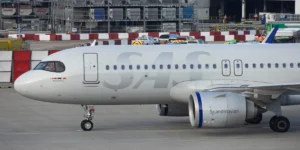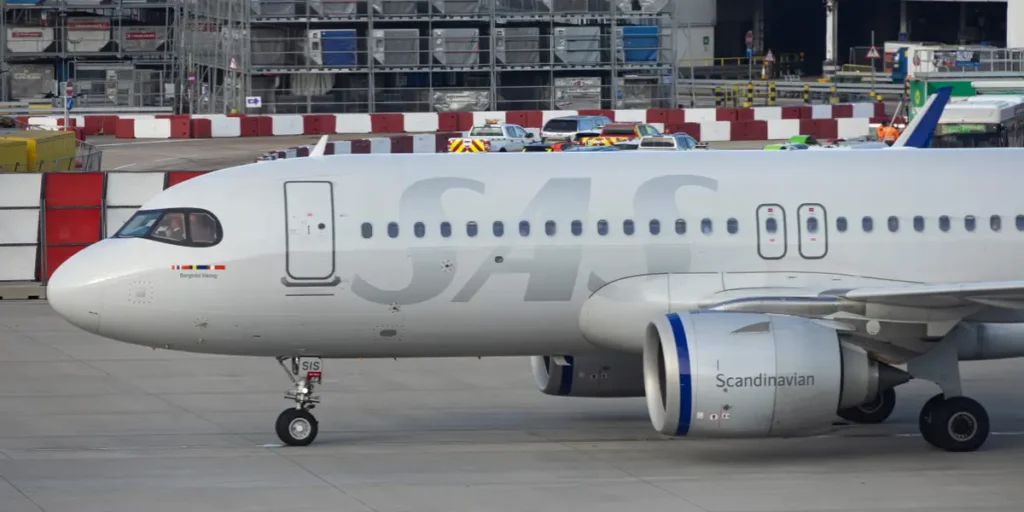Airlines are becoming increasingly vigilant about batteries — and a recent fire on a flight in Norway is a stark reminder of why.
Eight people were taken to the hospital after a battery caught fire in someone’s hand luggage, according to Norway’s Accident Investigation Board.
Passengers were still boarding a Scandinavian Airlines plane that was about to embark on a flight from the Norwegian capital, Oslo, to Bergen, less than an hour west.
The incident occurred on October 14 but came to light on Tuesday when Norwegian officials announced their investigation.
About 50 people had boarded SAS Flight 295 when smoke was seen coming from a suitcase.
The cabin was evacuated while the pilots put on oxygen masks and the flight attendants wore smoke hoods.
Cabin crew members tried to extinguish the fire, but it flared up again. The suitcase was taken out of the plane, where the fire service put out the fire.
The ambulance service was called, and eight people were taken to the hospital for observation after they were believed to have inhaled toxic fumes. They were all discharged within 48 hours, Norwegian investigators said.
SAS did not immediately respond to a request for comment.
How are airlines cracking down on power banks?
Emirates
The safety risks posed by lithium-battery devices have grown more apparent this year, with many airlines tightening power bank rules and some flights being forced to divert.
Power banks, phones, and laptops are all powered by lithium batteries — but the former are more susceptible to damage or overcharging. This can result in thermal runaway, which leads to a rapid temperature increase and, in some instances, fire.
Back in January, 27 people were injured when an Air Busan flight caught fire on the ground at South Korea’s Busan Airport.
The plane was written off, and investigators pointed to a power bank as the source of the fire. Then, the South Korean government banned passengers from charging power banks on planes.
Airlines around the world have followed suit with similar rules, including Emirates and Southwest Airlines.
In June, the day after its new rules took effect, a Southwest flight diverted as a battery charger started smoking.
The Federal Aviation Administration issued a safety alert in September, recommending airlines ensure that passengers keep lithium-battery devices visible and accessible.
It has recorded over 60 incidents involving lithium batteries since the start of the year.
Sometimes, the mere risk of a fire has prompted pilots to turn planes around.
Last month, a United Airlines flight U-turned over the Atlantic Ocean after a passenger dropped their laptop down the side of their seat, and it fell into the cargo hold.
That meant those on board wouldn’t know if it had caught fire until it was too late. It’s the same reason you’re not allowed to pack electronic devices in checked luggage.
“We don’t know the status of it, we can’t access it, we can’t see it,” one of the pilots told air traffic control during the incident. “So our decision is to return to [Washington] Dulles and find this laptop before we can continue over the ocean.”
A similar incident occurred just five weeks later, when another United passenger dropped a laptop during a flight from London to Washington, D.C.
“Maintenance crews retrieved the laptop, inspected the aircraft, and the flight later departed for Washington Dulles,” an airline spokesperson said.


